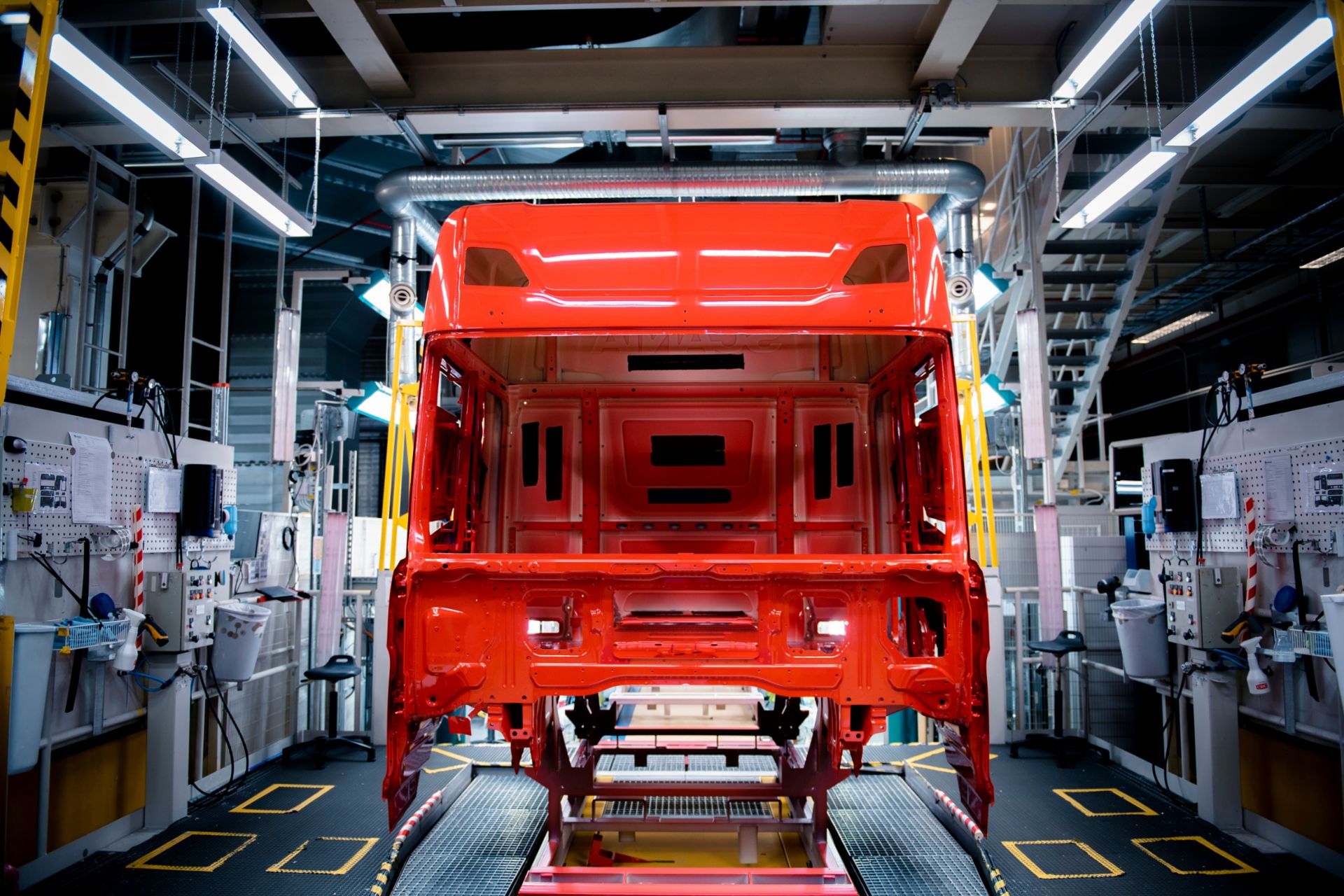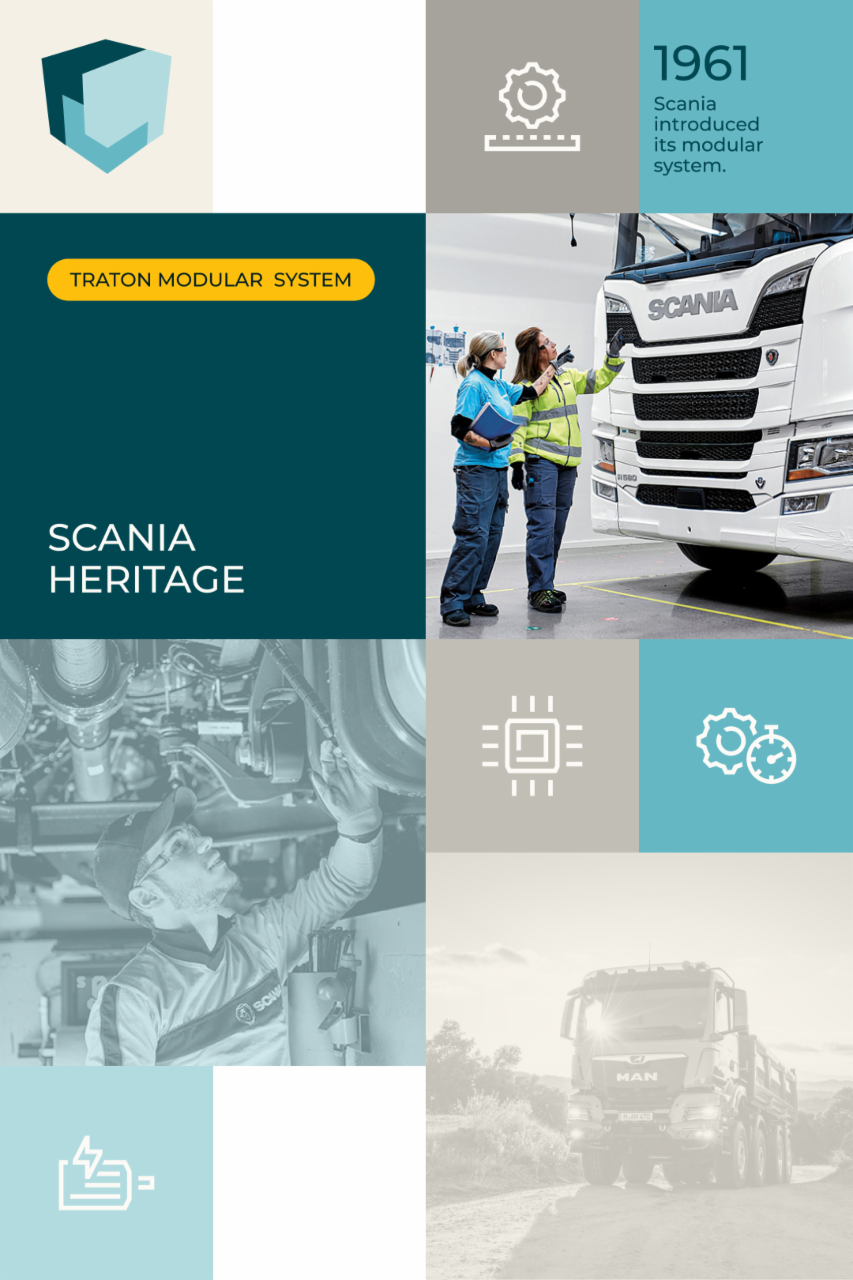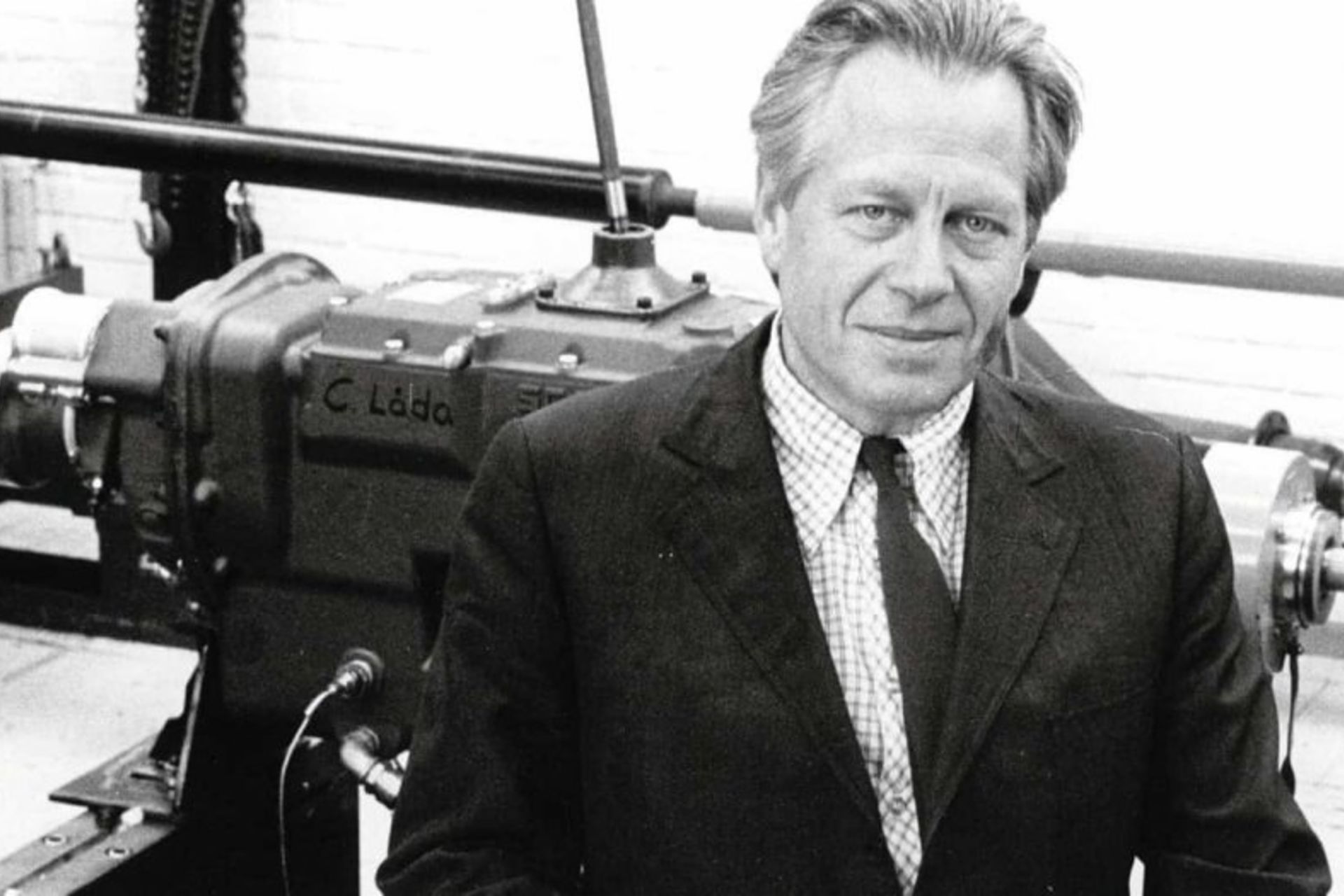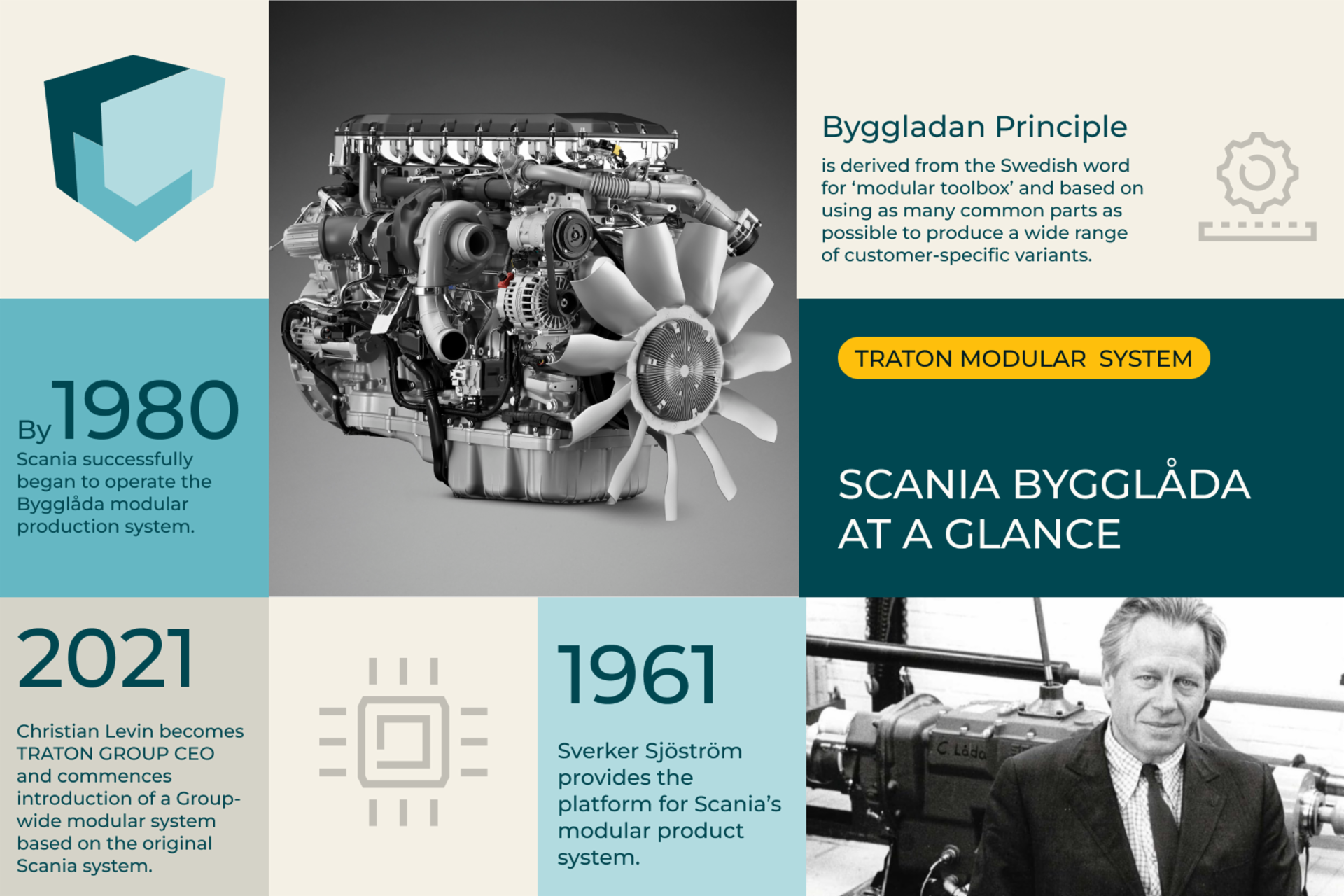Scania’s utilization of a modularity concept was initially based on the Byggladan principle (Swedish for ‘construction kit’). This approach recognized nearly a century ago that a brand’s competitiveness depends on its ability to respond flexibly to global market demands within the shortest timeframe. Over time, this evolved into the company’s modular toolbox system, which provides a comprehensive set of components for constructing a vehicle.
As early as the 1930s, Scania explored how to reuse components to address the same needs and requirements while minimizing the number of parts in the process. From the late 1940s, many of the company’s employees contributed to the development of a modular way of thinking. Their goal was to pair the economical requirements of manufacturing with the fulfilment of customer needs.
During the 1950s and 1960s, increased complexity stemming from a combination of new technologies and overseas expansion resulted in significant quality issues within Scania. In 1961, the brand’s first technical director, Sverker Sjöström, led extensive research into operational loads in various vehicles, along with power-transmitting components, to streamline operations. Sjöström’s initiative highlighted the importance of beginning with the customer need, which would result in efficient part number structures through the reuse of components for equal needs, and thus, the initial platform for the company’s modular product system was born.
The principles of a simplified component selection evolved throughout the 1970s and by 1980 Scania had developed a system of fundamental building blocks which, through applying standardized interfaces, could be combined to accommodate various market requests.
In the 1990s, Scania developed the three main principles of modularization, which remain in force today.
-
The interface serves as an interconnection point between two different component series, defining how components depend on each other.
A standardized interface ensures that the relationship between components remains consistent, regardless of variations within a component series. This includes all types of interfaces, such as spatial, energy, force, flow, and information and control interfaces, which are standardized over time.
Components performing the same functions should have identical interfaces.
-
If customers do not require varying performance outcomes, then existing components should be reused as much as possible in the development of new performance steps.
This approach ensures that the same need is addressed with an identical solution, optimizing efficiency and resource utilization.
-
Components within a component series exhibit different performance levels, known as performance steps.
Achieving balanced performance steps involves determining the optimal number and level of steps within a component series, which can often be a balancing act due to diverse customer needs spanning an unlimited range of performance steps. Manufacturers must identify the most frequent needs and decide how closely these requirements must be met.
The balancing is under constant assessment, aiming to find the optimal tipping point between covering a wide range of customer demands with different performance steps and managing cost implications.
When needs differ, well balanced performance steps are essential.
TRATON Modular System – a Group-wide approach to modularization
When Christian Levin became CEO of the TRATON GROUP in 2021, while retaining his President and CEO positions at Scania, he expressed a clear ambition for the entire Group to leverage the wealth of knowledge accumulated by Scania over the past 70 years. Recognizing the strong heritage and success of Scania’s modular system, the decision was made to adapt and evolve the modularization strategy into a cross-brand structure. In doing so, this ensures the system can effectively address the unique needs of each business and its customers, while continuing the lineage and the commonality of Bygglådan.
TRATON laid the foundation for Group-wide modularity by establishing new Group Industrial Functions, which would prepare and implement a more advanced and collaborative modular system to ensure better profitability, efficiency, and longevity for all brands.
The initiative set the stage for the continuation of the modularity philosophy and the creation of the TRATON Modular System (TMS). The innovative concept will create a matrix organization which harmonizes resources across global teams, allocating costs and investments for shared solutions for common needs within the Group. After all, modularization can create economies of scale at a lower component level by utilizing standardized interfaces while still enabling maximum performance. In addition to enhancing efficiency by eliminating the duplication of work and accelerating decision-making, this initiative will also strengthen cross-brand communication.
By adopting a more efficient approach, thanks to standardized interfaces that permit the sharing and reuse of components, production can be shared across different sites when required, only duplicating production when capacity necessitates multiple production lines. This capability is crucial during times of shortages and supply chain disruptions. With these product and efficiency savings, TRATON can allocate more resources to essential R&D projects, thereby freeing up innovation power to create customer value in design and enable faster product launches.
This approach has already been demonstrated through the new eAxle program, the adapted suspension program, and the energy storage program. The Group can introduce and scale these programs very quickly in different markets to meet diverse needs through open combinatorics.
Organizational models like the TMS offer numerous advantages to customers in different markets, including increased product optimizations, more configurations, shorter lead times, greater sustainability, and coordinated service support. One of TRATON’s 10 Strategic Priorities for 2024, the TMS will ensure consistent governance of the Group’s brands, ensuring greater accountability.
TRATON has already begun implementing the TMS, with Group service entities such as the TRATON Charging Solution and TRATON Financial Services created to support products and services built on the modular system. Equally, the Common Base Engine project serves as an example of successful multi-brand modularity through shared design, strategy, craftmanship, and responsibility.
Retaining brand uniqueness in globalization
The TMS will introduce rationality into different solutions, including chassis, axles, gearboxes, powertrains, batteries and suspensions, as well as software and digital services. While common solutions will be implemented across TRATON’s brands, each manufacturer has unique products and needs that require bespoke component steps. Therefore, brand-specific components will continue to be developed, enabling Scania, MAN, Navistar and Volkswagen Truck & Bus (VWTB) to retain their unique identities.
In practical terms, approximately 20% of the TRATON GROUP’s R&D projects will focus on brand-specific solutions, while 80% of projects will be dedicated to Group innovations. TRATON aims to achieve significant flexibility and synergies with a common Group production system. The benefits of this approach extend to after-sales areas, including parts availability and training for mechanics, while fostering independence among its brands.
Similarly, Scania’s modular history has not ended following its integration into the TRATON GROUP. It will continue to evolve within a broader TRATON modular framework, leveraging support and data from four global brands operating across multiple markets.
Is modularity the perfect solution for manufacturers?
The need to generate cost and sustainability efficiencies has never been greater, particularly with technological change and the rapid influx of new players into the market. Modularity will help weather the storm of supply chain pressures, ensuring seamless operations across global businesses by enabling uniformity and extremely fast scaling up of solutions throughout the whole Group.
“A modern multi-brand manufacturing group must leverage the synergies between its partners, and adhering to modular principles can fulfill this requirement,” says Martin Björklund, Product Strategy Modularization in the TRATON GROUP. “This ensures external effectiveness through consistently high-quality solutions and profitable mass customization, promising long-term competitive advantages. Simultaneously, modularity addresses internal efficiencies through ‘plug & play’ integration across all business functions, reducing unnecessary performance steps, as well as engineering and integration costs.”
Modularization may have originated nearly a century ago, but its fundamentals remain unchanged, serving customers, manufacturers, and the industry more efficiently. It’s about being part of something bigger, whether it’s the TRATON GROUP or the transport industry as a whole.





